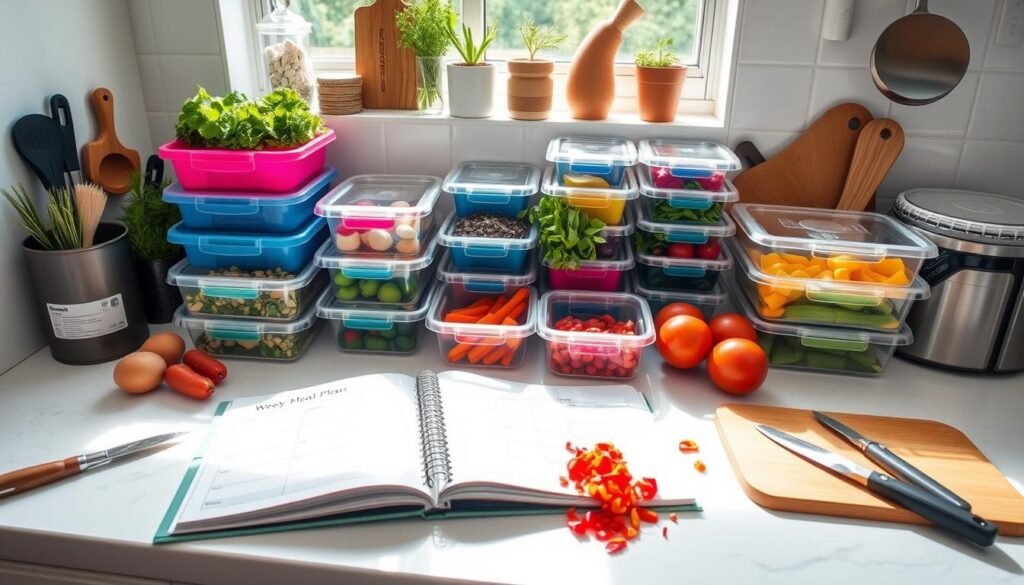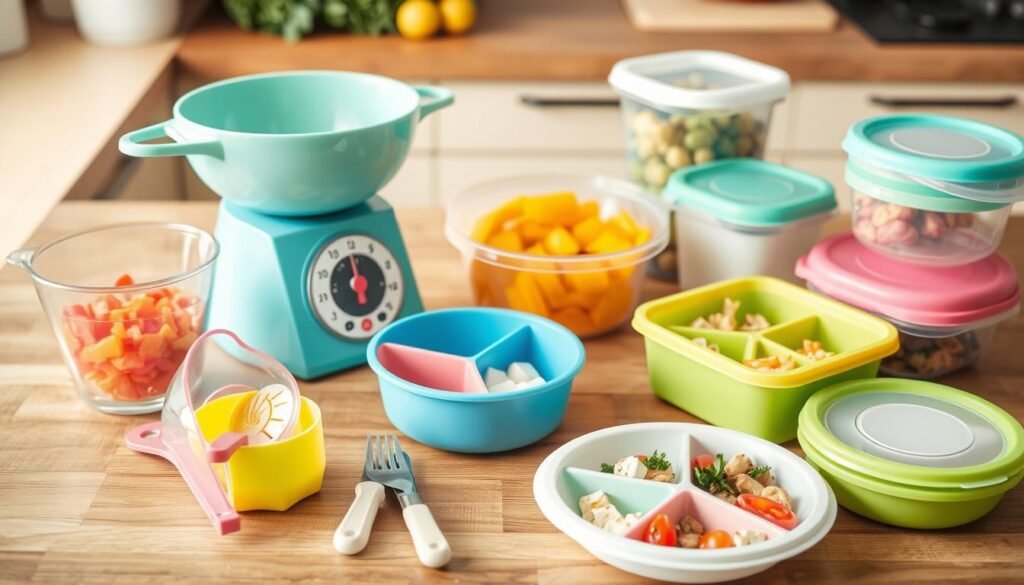Welcome to the ultimate guide on meal planning. It’s where healthy eating and easy cooking unite! Meal planning lets you manage your nutrition. It makes cooking simple every day. By planning your meals, you enjoy a balanced diet. This also cuts food waste and saves time.
Here, we’ll look at handy meal prep tips and cooking techniques. They’ll make your kitchen time better and eating habits healthier. Get set for organized meal planning. Each meal pushes you towards a healthier lifestyle!
Key Takeaways
- Meal planning promotes healthy eating and ensures balanced nutrition.
- Effective meal prep tips can save you time and stress in the kitchen.
- Strategic grocery shopping reduces food waste and saves money.
- Organizing recipes can streamline the cooking process.
- Meal prepping can help you stay on track with your health goals.
- Understanding portion control is crucial for a sustainable diet.
What is Meal Planning?
Meal planning is key for a healthy lifestyle. It’s about organizing your meals and snacks for the week ahead. You pick recipes, make shopping lists, and prep ingredients. This helps you avoid unhealthy choices when you’re busy.
Understanding the Concept of Meal Planning
Meal planning isn’t just choosing what to eat. It’s about planning and preparing. The steps include:
- Recipe Selection: Picking meals that are healthy.
- Shopping Lists: Making a list to avoid buying things you don’t need.
- Ingredient Prep: Getting veggies, proteins, and grains ready to save time.
These steps make sure you have healthy options ready. This means you’re less likely to eat fast food or snacks.
Benefits of Meal Planning for Your Health
Meal planning has many benefits, not just convenience. It leads to:
- Improved Dietary Health: You’re more likely to eat balanced meals.
- Enhanced Nutrient Intake: It helps you eat a variety of foods, which is healthier.
- Decreased Unhealthy Choices: Knowing your meals in advance helps you avoid bad decisions.
The Basics of Nutrition Tracking
Nutrition tracking is key for improving meal planning and health. It involves watching what you eat and its nutritional content. This helps make better diet choices. Starting to track your meals can range from simple to detailed approaches.
How to Begin Tracking Your Nutrition
Starting your nutrition tracking journey involves several important steps:
- Set Clear Goals: Decide if you want to lose weight, gain muscle, or just stay the same.
- Choose a Method: You can track meals with apps like MyFitnessPal and Fitbit or use a notebook if you prefer writing things down.
- Monitor Your Meals: Write down everything you eat each day. This helps you spot eating habits and make needed changes.
- Review Regularly: Look over your food log from time to time. This helps you see your progress and adjust your plan.
Tools for Effective Nutrition Tracking
Choosing the right tools can make tracking your nutrition better. Here are some top picks:
| Tool | Type | Features |
|---|---|---|
| MyFitnessPal | App | User-friendly interface, barcode scanner, big food database |
| Fitbit | Device/App | Tracks activity, logs meals, works with other health apps |
| Lose It! | App | Helps with setting goals, tracking progress, connects with fitness gadgets |
| Food Journal | Manual | Lets you track meals your way, very flexible |
Using a mix of nutrition tools can make meal planning more precise. It helps in reaching health goals and creating a balanced lifestyle more easily.
Creating Grocery Lists for Efficiency
Making an efficient grocery list is key to good meal planning. A well-organized list can make shopping easier and ensures you don’t forget important items. This guide will help you create a structured list and offer tips to save money and keep your food budget on track.
How to Build an Organized Grocery List
Start by grouping your grocery list into categories. Break it down into produce, dairy, grains, and proteins for a smoother shopping trip. Here’s how to make your grocery list work better:
- Assess Current Inventory: Look in your pantry and fridge to see what you already have.
- Plan Meals: Decide on your meals for the week and list what you need.
- Group Items: Arrange your list by store sections to save time while shopping.
Tips for Shopping Smart and Saving Money
Using smart shopping tips can help you save money and eat healthier. Here are a few good strategies:
- Buy Seasonal Produce: Seasonal fruits and veggies are usually cheaper and better quality.
- Utilize Store Sales: Check the sales flyers each week for discounts on your groceries.
- Choose Generic Brands: Often, store brands are as good as name brands but cheaper.
Using these strategies along with a solid grocery list will improve your shopping. You’ll keep to your budget more easily, choose healthier options, and waste less food. With a little planning, shopping for groceries can be both efficient and satisfying.
| Category | Examples | Shopping Tips |
|---|---|---|
| Produce | Fruits, Vegetables | Buy seasonal to save money |
| Dairy | Milk, Cheese, Yogurt | Look for weekly specials |
| Grains | Bread, Rice, Pasta | Consider bulk purchases |
| Protein | Meat, Eggs, Legumes | Choose sales or family packs |
Recipe Organization for Easy Meal Prep
Efficient recipe organization is key to easy meal prep. It helps you save time and keeps stress away in the kitchen. There are many ways to organize your recipes, so you can pick what fits you best.
Methods for Organizing Your Recipes
Organizing your recipes well can make cooking more enjoyable. Here are some methods to keep them in order:
- Binder Systems: A three-ring binder with plastic sleeves works great for your best recipes. Sort them by type or ingredient to find them fast.
- Digital Recipe Files: Keep your digital recipes in folders on your computer or the cloud. Some apps even help with searching and sorting them.
- Printed Recipe Cards: Write or print your recipes on index cards. Store them in a box. This old-school method feels good and lets you make it your own.
Digital vs. Paper Recipe Management
Whether you prefer digital or paper for recipes is up to you. Here’s a quick comparison:
| Aspect | Digital Recipes | Paper Recipes |
|---|---|---|
| Accessibility | Access them on many devices, easy to sync | You need to have them with you, or make copies |
| Organization | Sorting and searching them is flexible | Organizing by hand takes time but is very personal |
| Sharing | Easy to share online | Needs physical copies or pictures to share |
| Creativity | Works with apps for better meal planning | Allows handwriting notes for a personal touch |

Meal Prepping: A Game Changer
Meal prepping makes eating healthier and more convenient. By preparing meals ahead, people can enjoy meals that fit their taste and health needs. It’s about finding meal prep ideas that work for you.
What is Meal Prepping and How to Start?
Meal prepping means making meals before you need them. It helps keep your eating organized and tasty all week. Start by batch cooking your favorite recipes. Cook large amounts at once, then divide them into portions for later.
Time-Saving Meal Prep Tips
Try these tips to make meal prepping quicker:
- Use slow cookers or instant pots for easier cooking.
- Keep snacks simple, like cut fruits or trail mix.
- Use ingredients in several meals to cut down on cooking time.
- Pick a day each week for meal prepping to stay consistent.
Using these ideas can make your meal prep smoother. It helps you eat better and saves time, improving your health and life.
| Ingredient | Meal Use | Preparation Time |
|---|---|---|
| Quinoa | Salads, Bowls, Side Dish | 15 minutes (cooked in bulk) |
| Chicken Breast | Sandwiches, Stir-fries, Salads | 30 minutes (grilled or baked) |
| Vegetables (mixed) | Roasted, Stir-fries, Snacks | 25 minutes (roasted in bulk) |
| Eggs | Salads, Breakfast Bowls, Snacks | 10 minutes (boiled) |
Meal prepping should be fun and easy. It leads to better eating habits and saves time during your busy week.
Poor Portion Control and Its Consequences
Poor portion control can lead to eating too much and health problems. It’s key in eating well and keeping a balanced diet. Knowing how much to eat helps people make better food choices.
Understanding Portion Sizes
It’s important to know what a normal serving looks like. You can use everyday items to guide you:
- 1 cup of cooked pasta is the size of a baseball.
- 3 ounces of meat looks like a deck of cards.
- 1 medium fruit compares to a tennis ball.
Using visual aids can help guess portions right. This keeps eating habits healthy and stops too many calories from piling up.
Tools to Help with Portion Control
Certain tools make keeping track of how much you eat easier. Here are some good ones:
| Tool | Description | Benefits |
|---|---|---|
| Portion Control Plates | Plates with sections for different foods. | They encourage well-rounded meals and teach you about sizes. |
| Measuring Cups | Cups for measuring amounts. | They make sure you get the right amount of everything. |
| Food Scales | Tools for weighing your food before you eat it. | Perfect for knowing exactly how much meat or cheese you’re having. |

Accommodating Dietary Restrictions
It’s crucial to know about dietary restrictions when planning meals. There are many special diets out there. Each one has specific things it includes and avoids. Learning about these can help you plan better meals. You can offer both nutrient-rich foods and good alternatives.
Identifying Common Dietary Restrictions
Many people need to follow special diets. The most common dietary restrictions are:
- Gluten-free: Needed for those with celiac disease or gluten sensitivity. It cuts out wheat, barley, and rye.
- Vegan: Avoids all animal products and focuses on plants.
- Keto: A diet low in carbs but high in fats.
- Dairy-free: For those with lactose intolerance or allergies, it avoids dairy.
- Paleo: Promotes whole foods and excludes processed foods, grains, and legumes.
Meal Planning for Special Diets
Here’s how to plan meals for special diets:
- Check your dietary needs: Know what you can and can’t eat.
- Plan balanced meals: Make sure to include various food groups within your guidelines.
- Choose substitutes carefully: Pick alternatives that meet your needs, like almond milk for dairy or gluten-free grains instead of regular pasta.
- Find the right recipes: Look for meals that suit your dietary restrictions but still taste great.
- Prepare ahead: Cooking meals in advance makes it easier to stick to your diet.
The Role of Calorie Counting in Meal Planning
Calorie counting is key for successful meal planning. It’s really important for those wanting to control their weight or hit health goals. By keeping an eye on calories, you choose smarter what to eat.
This method helps focus on foods rich in nutrients. It also matches energy use to your personal aims. Whether you want to lose weight, gain muscle, or keep a balanced diet, counting calories is a big help.
How Calorie Counting Can Support Your Goals
Calorie counting can really boost your dietary awareness. It makes it simpler to fix your portion sizes and what you eat. Knowing the calories in foods lets you plan meals that meet your needs and still satisfy hunger.
This strategy also leads to eating mindfully. That’s key for staying healthy in the long run.
Tools and Apps for Calorie Counting
There are lots of nutrition apps today to help with calorie counting. Favorites like Lose It! and Cronometer are great. They let users log meals, watch calorie intake, and track their dietary journey easily.
Using these tools can improve your meal planning. They offer quick feedback and help your eating match your diet goals.
